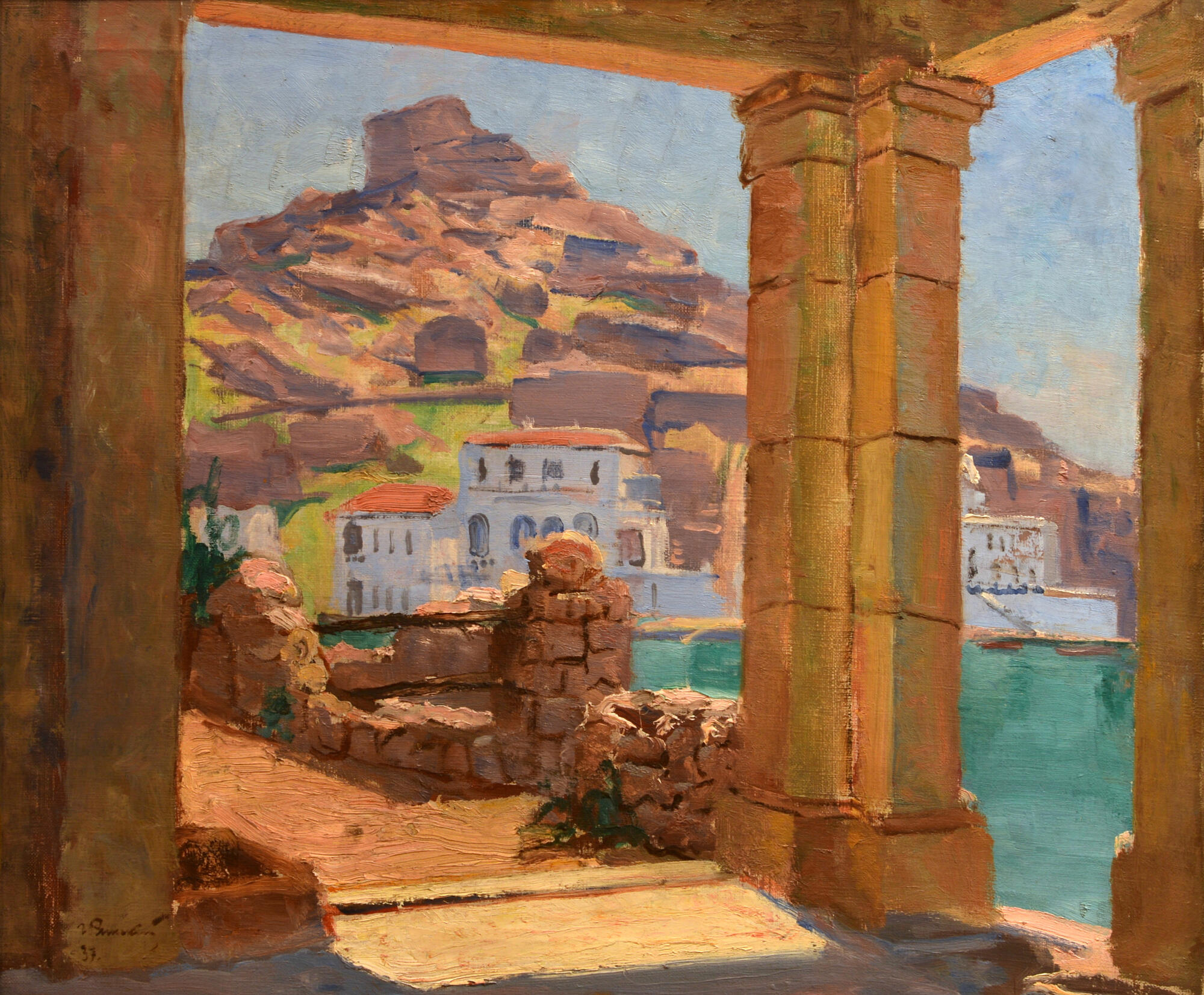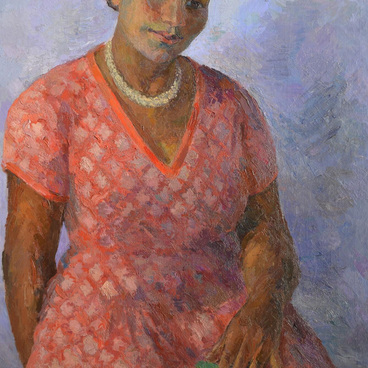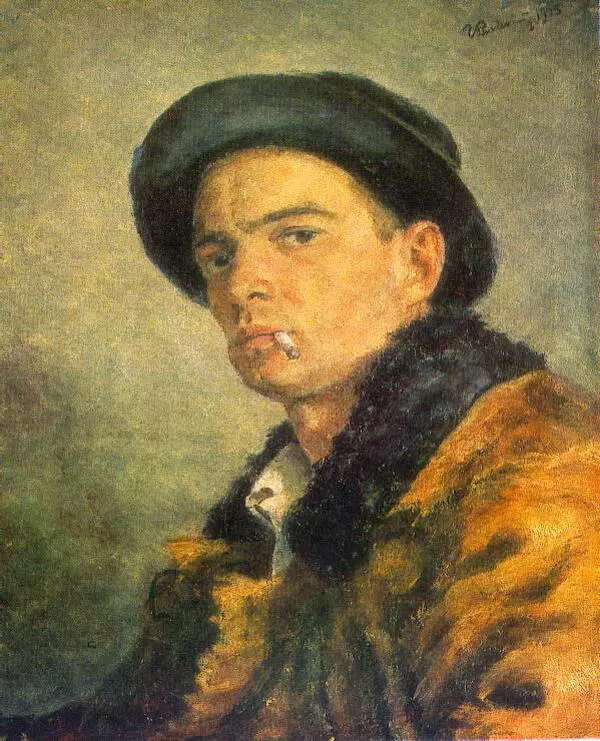Georgy Georgyevich Ryazhsky was a Soviet painter. His talent was most revealed in the genre of portrait, and one of his main themes was the Soviet woman as an active builder of the new Soviet reality. However, Ryazhsky also repeatedly turned to the landscape genre in his work. He traveled a lot around the country, expanding the walls of his workshop: he visited construction sites, painted Svaneti, and explored Crimea.
Georgy Ryazhsky was born in 1895 into a rural peasant family. He received his initial art education in the drawing class of the Moscow Prechistensky Evening Courses for Workers. In the First World War, Ryazhsky was drafted into the army, and after demobilization, the future artist worked in the Red Army units: he created posters and was engaged in designing Soviet holidays. After the Russian Revolution, becoming a student of Vkhutemas, he attended the sculpture workshop of Anna Golubkina, and studied painting in the class of Kazimir Malevich.
In the landscape presented in the exhibition, the columns of the stone portico open a view of the waters of Balaklava Bay and a high mountain, at the foot of which several buildings with white walls are depicted.
The contrast of light and shadow, which the artist emphasizes, conveys the atmosphere of a sultry southern afternoon, when the scorching sun makes you look for coolness in the shade. The air seems motionless: not a single cloud sweeps over the calm azure of the bay. The space is empty and deserted, the upper part of the red-hot stones and the path are illuminated by sun rays.
The displayed painting — “Balaklava” — is part of a series of landscapes created by Georgy Ryazhsky during his trip to Crimea. In the late 19th — early 20th century, this resort town attracted the attention of many prominent writers and creative intelligentsia: some lived there permanently, and some — vacationed.
One of the most notable buildings of the Balaklava Bay embankment was the palace of Count Nikolay Apraksin, unfortunately, it is in ruins now: only the ground floor has been preserved. The remnants of this magnificent villa (built by the architect Nikolay Petrovich Krasnov, who also designed the Livadia Palace) can now be seen on the west bank.
Judging by the view that opens, the artist created
his work, while standing on the western side of the bay. With a certain degree
of probability, it can be assumed that the columns that frame the view of the
seaside town are an image of the portico of Count Apraksin’s dacha. In 1918,
Apraksin emigrated abroad, and vacationing Soviet writers began to stay at his
house.





